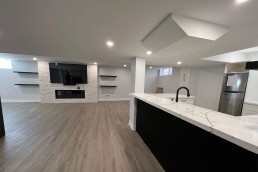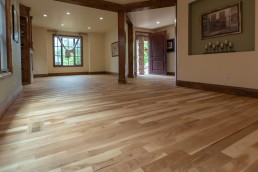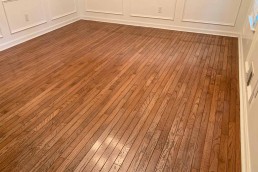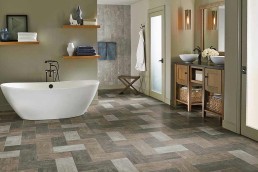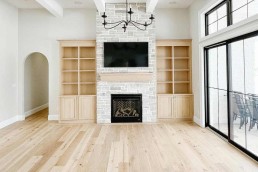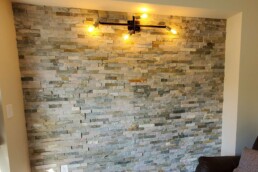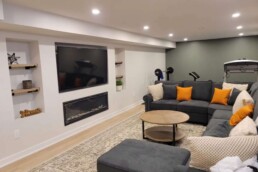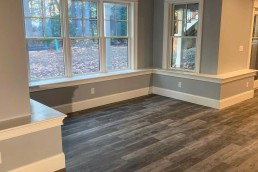How to plan your flooring renovation project
When creating the layout of a space, one of the essential surfaces to consider is the floor. Flooring is a major factor for any interior renovation project. There are a number of different reasons you may be considering installing new flooring like updating your floor’s physical look or you could be repairing damaged flooring.

Other reasons to install new flooring is to add additional comfort to your home, since different flooring materials and systems have additional benefits. Ultimately you should consider the practicality, the durability of the chosen material, and the aesthetic element of the surface.
The floor in most rooms suffers significant wear and tear as we walk over it, move furniture, and drop things on its surface. Flooring can also experience the effects of changing temperatures and can cause the flooring to expand or contract. Flooring material is a vital component to consider in the case that they will experience damp environments like the kitchen or bathroom. As a result, wherever appropriate, pick a flooring material that is durable and will not show symptoms of wear too quickly or experience excess damage. Planning a flooring renovation project, first decide on what room the flooring will be placed in as this alone can filter the options of what flooring is suited for that space.
Things to consider for your flooring reno project
Type of room
The floor type you choose must match the room where it will be installed. Highly durable and resistant flooring materials would be ideal for kitchens. For other areas like the living room you have more options to choose from but still consider the overall use for the room. For example children who frequently use a room you may select a flooring that is not as slippery and easy to clean.
Style
There are numerous colors, finishes and textures for flooring materials. This will depend on your personal preference and the overall aesthetic you are trying to go for. Flooring tends to be the focal point in any room and matching it with both the walls and furniture you can create an appealing and functional space.
Maintenance
Certain floor types require frequent cleaning and care to maintain their appearance and sheen, while other flooring materials can be installed and require little care. Be sure to understand the upkeep needs of the flooring you chose to guarantee the longevity of that surface.
Durability
Unless the area where the floor will be installed in is a low-traffic space, you should select a material that will endure everyday wear and tear without needing to be changed in a few months. As a result, the floor must be sturdy, which will influence both the material used and the installation methods.
Climate
The indoor climate of your home can directly affect your flooring. Wood can warp and buckle in humid environments which should be installed correctly to account for its fluctuating shape. In contrast, tile is an alternative that is not easily influenced by the climate of a room. Selecting a material appropriate for your climate setting can ensure the flooring’s longevity.
Dust or allergies
For those in the home that have allergies the type of flooring can affect their ailments. Selecting a hard-surface flooring collects fewer dust mites and allergens. Allowing for a more comfortable living space.
Comfort
Flooring can affect the overall comfort of a room, where options like carpeting can feel warmer to the feet during the cooler months. If heating is a priority, consider heated flooring that can be manually controlled to your preferences.
Water resistance
Water resistant or waterproof flooring are different in how much water they can withstand. Water resistant flooring is good in areas that experience the occasional spill or slightly humid environment. In comparison, waterproofing flooring is ideal in areas where they regularly come into contact with water like a bathroom or the laundry room since their construction allows no water to seep through.
Ready to get Started on your FLOORING Renovation Project?
How much does it cost to renovate flooring?
The total cost of a flooring renovation project can greatly differ based on the type of flooring being installed, the room size, the flooring brand, and labor costs. Always choose an experienced and reputable flooring contractor to ensure proper installation. Getting the renovation project properly done the first time ensures no immediate repairs are needed or even a flooring replacement.
There are numerous flooring types all with their different benefits and appeal. Some common materials used in flooring are carpet which can cost around $1 to $6. Another common flooring material is laminate which has an average cost of $4 to $8. Hardwood is a popular flooring option which has costs that range from $6 to $12. These are general ranges that can fluctuate with current demand and pricing of certain materials. When budgeting for flooring also take into account additional costs that may go overlooked. Such costs are the removal and disposal of current flooring if you are replacing existing flooring in an area. Another additional cost consideration is if the type of flooring selected requires underflooring materials. As an example carpet padding is usually installed underneath carpet flooring. These additional costs should be budgeted into your renovation plan. Flooring renovations are an investment that offer visual appeal, durability, and overall value to your home.

View Our Flooring Contractor Directory
Search our directory of kitchen renovation contractors in your city






